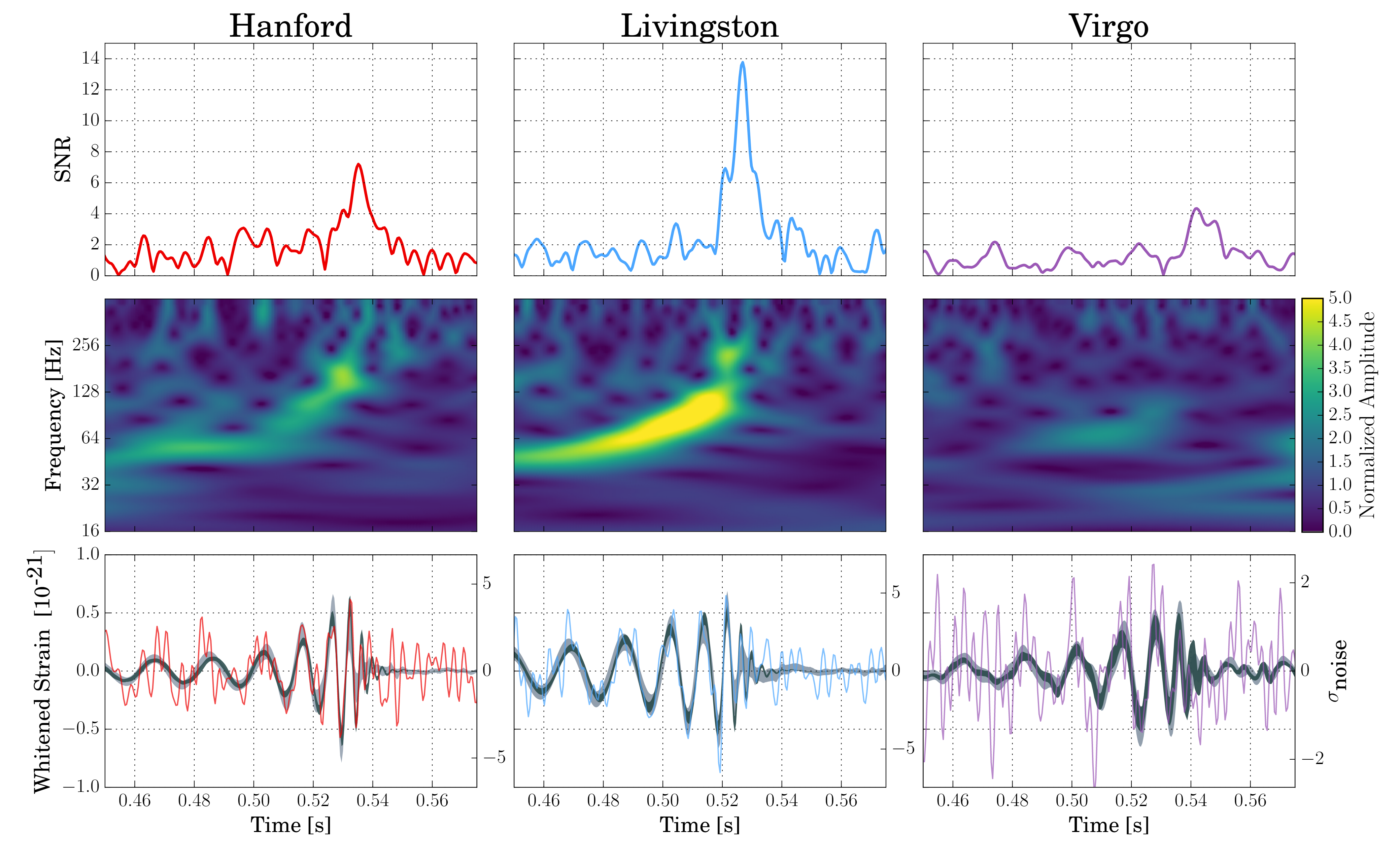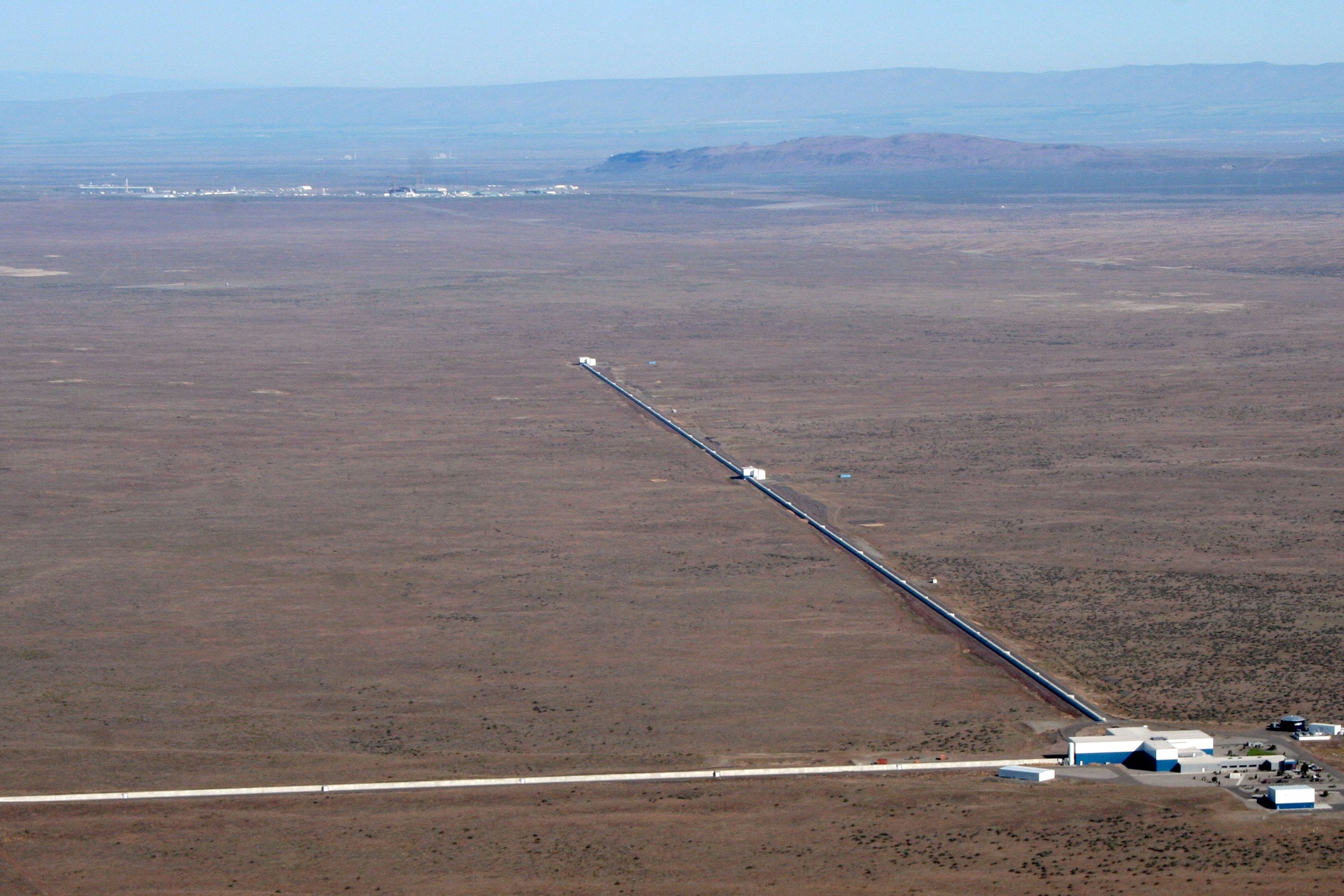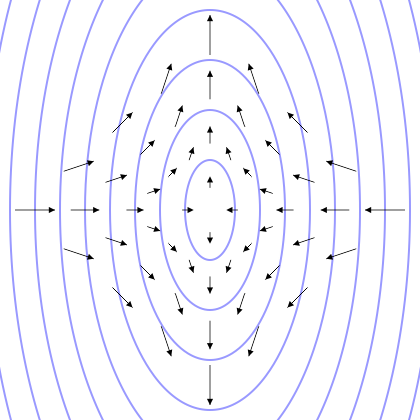|
Gravitational Wave International Committee
The Gravitational Wave International Committee (or GWIC) is a panel of gravitational wave detection Laboratory or Observatory directors that promotes cooperation and collaboration between the gravitational wave detector projects and provides direction and advice on the future development of the field. Barry Barish founded the GWIC in 1997 and served as the chair from 1997-2003. Mission The mission of GWIC is to facilitate international collaboration and cooperation in the construction, operation and use of the major gravitational wave detection facilities worldwide: *Promote international cooperation in all phases of construction and scientific exploitation of gravitational-wave detectors; *Coordinate and support long-range planning for new instrument proposals, or proposals for instrument upgrades; *Promote the development of gravitational-wave detection as an astronomical tool, exploiting especially the potential for multi-messenger astrophysics; *Organize regular, world-inclus ... [...More Info...] [...Related Items...] OR: [Wikipedia] [Google] [Baidu] |
Gravitational Wave Detector
A gravitational-wave detector (used in a gravitational-wave observatory) is any device designed to measure tiny distortions of spacetime called gravitational waves. Since the 1960s, various kinds of gravitational-wave detectors have been built and constantly improved. The present-day generation of laser interferometers has reached the necessary sensitivity to detect gravitational waves from astronomical sources, thus forming the primary tool of gravitational-wave astronomy. The first direct detection of gravitational waves made in 2015 by the Advanced LIGO observatories, a feat which was awarded the 2017 Nobel Prize in Physics. Challenge The direct detection of gravitational waves is complicated by the extraordinarily small effect the waves produce on a detector. The amplitude of a spherical wave falls off as the inverse of the distance from the source. Thus, even waves from extreme systems such as merging binary black holes die out to a very small amplitude by the time ... [...More Info...] [...Related Items...] OR: [Wikipedia] [Google] [Baidu] |
GEO 600
GEO600 is a gravitational wave detector located near Sarstedt, a town 20 km to the south of Hanover, Germany. It is designed and operated by scientists from the Max Planck Institute for Gravitational Physics, Max Planck Institute of Quantum Optics and the Leibniz Universität Hannover, along with University of Glasgow, University of Birmingham and Cardiff University in the United Kingdom, and is funded by the Max Planck Society and the Science and Technology Facilities Council (STFC). GEO600 is capable of detecting gravitational waves in the frequency range 50 Hz to 1.5 kHz, and is part of a worldwide network of gravitational wave detectors. This instrument, and its sister interferometric detectors, when operational, are some of the most sensitive gravitational wave detectors ever designed. They are designed to detect relative changes in distance of the order of 10−21, about the size of a single atom compared to the distance from the Sun to the Earth. Construction on ... [...More Info...] [...Related Items...] OR: [Wikipedia] [Google] [Baidu] |
Physics Organizations
Physics is the natural science that studies matter, its fundamental constituents, its motion and behavior through space and time, and the related entities of energy and force. "Physical science is that department of knowledge which relates to the order of nature, or, in other words, to the regular succession of events." Physics is one of the most fundamental scientific disciplines, with its main goal being to understand how the universe behaves. "Physics is one of the most fundamental of the sciences. Scientists of all disciplines use the ideas of physics, including chemists who study the structure of molecules, paleontologists who try to reconstruct how dinosaurs walked, and climatologists who study how human activities affect the atmosphere and oceans. Physics is also the foundation of all engineering and technology. No engineer could design a flat-screen TV, an interplanetary spacecraft, or even a better mousetrap without first understanding the basic laws of physics. ... [...More Info...] [...Related Items...] OR: [Wikipedia] [Google] [Baidu] |
International Scientific Organizations
International is an adjective (also used as a noun) meaning "between nations". International may also refer to: Music Albums * ''International'' (Kevin Michael album), 2011 * ''International'' (New Order album), 2002 * ''International'' (The Three Degrees album), 1975 *''International'', 2018 album by L'Algérino Songs * The Internationale, the left-wing anthem * "International" (Chase & Status song), 2014 * "International", by Adventures in Stereo from ''Monomania'', 2000 * "International", by Brass Construction from ''Renegades'', 1984 * "International", by Thomas Leer from ''The Scale of Ten'', 1985 * "International", by Kevin Michael from ''International'' (Kevin Michael album), 2011 * "International", by McGuinness Flint from ''McGuinness Flint'', 1970 * "International", by Orchestral Manoeuvres in the Dark from '' Dazzle Ships'', 1983 * "International (Serious)", by Estelle from '' All of Me'', 2012 Politics * Political international, any transnational organizatio ... [...More Info...] [...Related Items...] OR: [Wikipedia] [Google] [Baidu] |
Virgo Interferometer
The Virgo interferometer is a large interferometer designed to detect gravitational waves predicted by the general theory of relativity. Virgo is a Michelson interferometer that is isolated from external disturbances: its mirrors and instrumentation are suspended and its laser beam operates in a vacuum. The instrument's two arms are three kilometres long and located in Santo Stefano a Macerata, near the city of Pisa, Italy. Virgo is hosted by the European Gravitational Observatory (EGO), a consortium founded by the French CNRS and Italian INFN. The ''Virgo Collaboration'' operates the detector and is composed of more than 650 members, representing 119 institutions in 14 different countries. Other interferometers similar to Virgo have the same goal of detecting gravitational waves, including the two LIGO interferometers in the United States (at the Hanford Site and in Livingston, Louisiana). Since 2007, Virgo and LIGO have agreed to share and jointly analyze the data recorded ... [...More Info...] [...Related Items...] OR: [Wikipedia] [Google] [Baidu] |
MiniGRAIL
MiniGRAIL was a type of Resonant Mass Antenna, which is a massive sphere that used to detect gravitational waves. The MiniGRAIL was the first such detector to use a spherical design. It is located at Leiden University in the Netherlands. The project was managed by the Kamerlingh Onnes Laboratory. A team from the Department of Theoretical Physics of the University of Geneva, Switzerland, was also heavily involved. The project was terminated in 2005. Gravitational waves are a type of radiation that is emitted by objects that have mass and are undergoing acceleration. The strongest sources of gravitational waves are suspected to be compact objects such as neutron stars and black holes. This detector may be able to detect certain types of instabilities in rotating single and binary neutron stars, and the merger of small black holes or neutron stars. Design A spherical design has the benefit of being able to detect gravitational waves arriving from any direction, and it is sensitive ... [...More Info...] [...Related Items...] OR: [Wikipedia] [Google] [Baidu] |
Laser Interferometer Space Antenna
The Laser Interferometer Space Antenna (LISA) is a proposed space probe to detect and accurately measure gravitational waves—tiny ripples in the fabric of spacetime—from astronomical sources. LISA would be the first dedicated space-based gravitational wave detector. It aims to measure gravitational waves directly by using laser interferometry. The LISA concept has a constellation of three spacecraft arranged in an equilateral triangle with sides 2.5 million kilometres long, flying along an Earth-like heliocentric orbit. The distance between the satellites is precisely monitored to detect a passing gravitational wave. The LISA project started out as a joint effort between NASA and the European Space Agency (ESA). However, in 2011, NASA announced that it would be unable to continue its LISA partnership with the European Space Agency due to funding limitations. The project is a recognized CERN experiment (RE8). A scaled down design initially known as the New Gravitational-wa ... [...More Info...] [...Related Items...] OR: [Wikipedia] [Google] [Baidu] |
LIGO Scientific Collaboration
The LIGO Scientific Collaboration (LSC) is a scientific collaboration of international physics institutes and research groups dedicated to the search for gravitational waves. History The LSC was established in 1997, under the leadership of Barry Barish. Its mission is to ensure equal scientific opportunity for individual participants and institutions by organizing research, publications, and all other scientific activities, and it includes scientists from both LIGO Laboratory and collaborating institutions. Barish appointed Rainer Weiss as the first spokesperson. LSC members have access to the US-based Advanced LIGO detectors in Hanford, Washington and in Livingston, Louisiana, as well as the GEO 600 detector in Sarstedt, Germany. Under an agreement with the European Gravitational Observatory (EGO), LSC members also have access to data from the Virgo detector in Pisa, Italy. While the LSC and the Virgo Collaboration are separate organizations, they cooperate closely and a ... [...More Info...] [...Related Items...] OR: [Wikipedia] [Google] [Baidu] |
Laser Interferometer Gravitational-Wave Observatory
The Laser Interferometer Gravitational-Wave Observatory (LIGO) is a large-scale physics experiment and observatory designed to detect cosmic gravitational waves and to develop gravitational-wave observations as an astronomical tool. Two large observatories were built in the United States with the aim of detecting gravitational waves by laser interferometry. These observatories use mirrors spaced four kilometers apart which are capable of detecting a change of less than one ten-thousandth the charge diameter of a proton. (that is, to Proxima Centauri at ). The initial LIGO observatories were funded by the United States National Science Foundation (NSF) and were conceived, built and are operated by Caltech and MIT. They collected data from 2002 to 2010 but no gravitational waves were detected. The Advanced LIGO Project to enhance the original LIGO detectors began in 2008 and continues to be supported by the NSF, with important contributions from the United Kingdom's Science an ... [...More Info...] [...Related Items...] OR: [Wikipedia] [Google] [Baidu] |
European Pulsar Timing Array
The European Pulsar Timing Array (EPTA) is a European collaboration to combine five 100-m class radio-telescopes to observe an array of pulsars with the specific goal of detecting gravitational waves. It is one of three pulsar timing array projects in operation, the others being the Parkes Pulsar Timing Array and the North American Nanohertz Observatory for Gravitational Waves. Pulsars and high-precision timing Pulsars are rapidly rotating, highly magnetised neutron stars that emit radio waves from their magnetic poles that are, due to the star's rotation, observed on Earth as a string of pulses. Due to the extremely high density of neutron stars, their rotation periods are very stable, hence the observed arrival time of the pulses are highly regular. These arrival times are called TOAs (time of arrival) and can be used to perform high-precision timing experiments. The stability of the TOAs from most pulsars is limited due to the presence of red noise, also called "timing noi ... [...More Info...] [...Related Items...] OR: [Wikipedia] [Google] [Baidu] |
Gravitational Wave
Gravitational waves are waves of the intensity of gravity generated by the accelerated masses of an orbital binary system that propagate as waves outward from their source at the speed of light. They were first proposed by Oliver Heaviside in 1893 and then later by Henri Poincaré in 1905 as waves similar to electromagnetic waves but the gravitational equivalent. Gravitational waves were later predicted in 1916 by Albert Einstein on the basis of his general theory of relativity as ripples in spacetime. Later he refused to accept gravitational waves. Gravitational waves transport energy as gravitational radiation, a form of radiant energy similar to electromagnetic radiation. Newton's law of universal gravitation, part of classical mechanics, does not provide for their existence, since that law is predicated on the assumption that physical interactions propagate instantaneously (at infinite speed)showing one of the ways the methods of Newtonian physics are unable to explain ... [...More Info...] [...Related Items...] OR: [Wikipedia] [Google] [Baidu] |
Einstein Telescope
Einstein Telescope (ET) or Einstein Observatory, is a proposed third-generation ground-based gravitational wave detector, currently under study by some institutions in the European Union. It will be able to test Einstein's general theory of relativity in strong field conditions and realize precision gravitational wave astronomy. The ET is a design study project supported by the European Commission under the Framework Programme 7 (FP7). It concerns the study and the conceptual design for a new research infrastructure in the emergent field of gravitational-wave astronomy. Motivation The evolution of the current gravitational wave detectors Advanced Virgo and Advanced LIGO, as ''second generation'' detectors, is well defined. Currently they have been upgraded to their so-called enhanced level and they are expected to reach their design sensitivity in the next few years. LIGO detected gravitational waves in 2015 and Virgo joined this experimental success with the first gravit ... [...More Info...] [...Related Items...] OR: [Wikipedia] [Google] [Baidu] |



